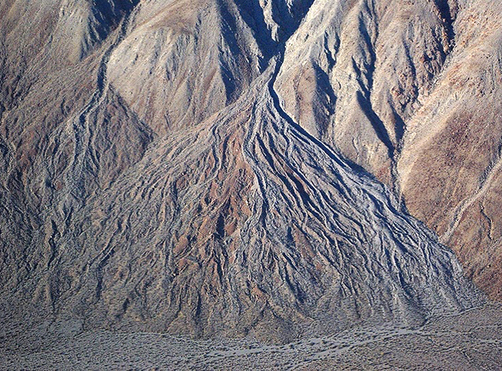The mystery on the ‘sailing stones’ in Death Valley’s Racetrack playa has been solved and I wrote about a few years ago when it happened, but the video embedded above is so well done, it’s worth revisiting this remote, harsh landscape where large rocks can ‘flow’ uphill.
SPOILERS (since 2014): On very rare occasions, when it rains in the region, water will accumulate in the playa (discovermagazine.com), and if the temperature dips below freezing a thin layer of ice will cover the playa. If the wind is powerful and consistent enough, the wind will push the panels of ice against these rocks and over time, the ice floes will push these rocks, leaving behind distinctive trails (latimes.com). This perfect combination of water, wind, ice and heat creates a remarkable signature on the landscape (livescience.com). The decidedly non-aerodynamic rocks of Death Valley’s Racetrack Playa leave behind a trail in the hot desert. Numerous attempts using GPS receivers (NatGeo.com) and good ol’ fashioned observations have been made, but observing ice in Death Valley is so rare that it was never observed until 2014 (phys.org).
Tags: physical, geomorphology, landforms, desert, landscape.










